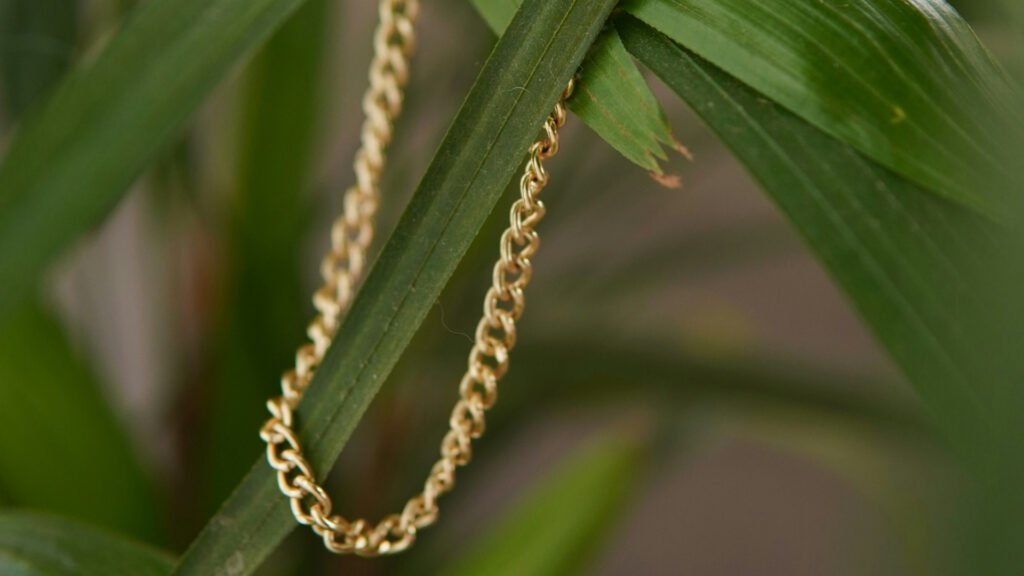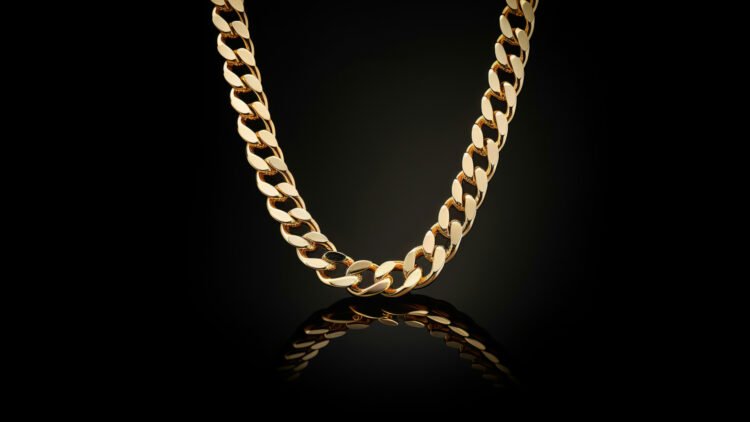If you’ve ever held a Cuban link chain in your hands, you know they feel solid, heavy, strong, and built to last. That’s part of the appeal. But when it’s time to take it off, the very thing that makes it durable can make it confusing.
I’ve fumbled with clasps. I’ve pulled too hard. I’ve even thought something was stuck when it wasn’t. So I figured out how to open them properly. If your chain feels locked tight, here’s how to deal with it the right way.
First, Identify the Clasp Type

Chains come with different types of fasteners. Some use a box lock, others use a lobster claw, and a few feature more complex double locks. Knowing what you’re dealing with makes everything easier.
If you’re working with a Cuban link gold chain, the clasp will usually be heavier and more secure compared to cheaper alternatives. These often feature reinforced box locks that blend into the link pattern, so identifying them takes a closer look.
Box Clasp Is Most Common
Most Cuban link chains, especially the thicker styles, use a box clasp. It blends into the chain but has a small latch or lever that releases it.
I run my finger along the edge until I feel the lever. Once I press it down, the lock releases. No need to force it. It’s built to open with one light press.
Brands like Icecartel use precision-engineered box clasps on their Moissanite chains, so a gentle press is all it takes when the mechanism is well-maintained.
Lobster Claw Clasps Are Simpler
These are more common in lighter chains or bracelets. They’re easier to spot and open; just pinch the lever, and the clasp opens.
Still, it helps to use your nails or a thin tool if the spring is tight. Avoid pulling the whole chain. That puts pressure on the link.
Some Chains Have Hidden Double Locks
A few high-end pieces have extra safety locks on the side of the clasp. These snap down over the box lock. If yours won’t open after pressing the main button, check the sides.
I’ve seen Reddit users complain their chain “broke,” only to find out later it had double safety clips they didn’t know about.
Use Both Hands for Better Control
Trying to open the clasp with one hand often leads to twisting or pulling. I always hold the chain with one hand while using the other to release the lock. This keeps pressure even and prevents bending.
It also gives me a better grip, especially if the clasp is small or tightly set into the chain.
Set the Chain Flat on a Table
When I struggle with a clasp, I lay the chain down and work from above. Gravity helps, and I can see what I’m doing.
This is especially useful for heavy pieces. Necklaces over 8mm thick often resist being handled mid-air. Letting them rest gives you more control.
Use a Tool If Necessary
If your nails can’t grip the latch, I use a wooden toothpick or a dull plastic edge, something that won’t scratch the metal.
Don’t use metal tools unless you’re okay with risking surface damage. I learned that the hard way on a gold-plated chain. The same care applies to pieces with delicate stones, especially ones set with lab-grown diamonds, which deserve just as much caution and respect as natural gems.
Be Careful With Older Chains

Older or poorly made Cuban link chains can develop issues with the clasp over time. Sometimes the latch doesn’t spring back. Other times, the metal has worn down and needs tightening.
Opening these takes patience. If I feel resistance, I stop. Forcing it usually causes the clasp to bend or break.
Look for Signs of Wear
Wobbly links near the clasp, a loose button, or misaligned edges are signs the lock may need repair. I never force these open.
Instead, I try to gently move the clasp side to side until it gives. If that doesn’t work, I take it to a local jeweler for adjustment.
Don’t Pull on the Chain Itself
It’s tempting to yank when nothing happens, but that pressure can warp the links or stretch the clasp. I always focus on the mechanism, never the chain.
One guy on Reddit said he pulled so hard that he cracked a gold link. That’s a costly mistake.
Clean the Clasp Area Occasionally
Sometimes the clasp gets hard to open just because it’s dirty. Sweat, lotion, and dust build up over time, especially in the small spaces around the hinge.
I use a soft toothbrush and a little soapy water every few weeks. That keeps the movement smooth and prevents buildup.
If you own a Moissanite Cuban link chain from Icecartel or a similar high-end brand, regular gentle cleaning helps preserve both function and shine.
Dry Thoroughly After Cleaning
Water trapped in the clasp can make it sticky or rust the spring in cheaper models. I always pat it dry with a soft towel and leave it open for a few hours to air out.
For real gold or silver chains, moisture isn’t a major issue, but it’s still good practice to keep things dry.
Use Lubricant Only if Needed
If a clasp sticks even after cleaning, I sometimes use a tiny bit of watch oil or WD-40 applied with a toothpick, not sprayed. This loosens the hinge but doesn’t soak the chain.
Avoid overdoing it. Too much oil attracts more dirt and makes the problem worse later.
Check the Lock Before You Wear It
After opening and closing the clasp, I always check that it locks tightly. If the click is weak or the latch feels soft, the chain could fall off while wearing it.
I tug gently to make sure it stays shut. This habit has saved me more than once.
Listen for the Click
Most clasps make a soft click when locked. That’s the signal that everything is in place. No sound usually means it didn’t close fully.
If it opens too easily after clicking, that’s a sign the spring needs tightening or the catch is worn down.
Avoid Wearing Until It’s Fixed
A loose clasp on a Cuban link chain is risky, especially if it’s real gold. I don’t wear any chain with a faulty lock. Better to skip it than lose it.
I’ve seen too many posts about lost chains due to broken clasps. Almost everyone starts with “I thought it was fine.”
Reddit Advice That Actually Helped
One user said they press the box clasp down gently with their thumb while pulling the tab instead of using nails. I tried it, and it made a big difference, especially on thicker chains.
Another suggested marking the clasp side with a tiny dot using a permanent marker. That way, you always know which side opens.
FAQ
How do I know if my Cuban link chain has a box clasp?
Box clasps look like a normal link but feel different. They usually have a small button or tab on the top or side.
Why won’t my Cuban link chain open?
It might have a hidden safety latch or be stuck from buildup. Check for side clips or try cleaning it first.
Can I fix a stuck clasp at home?
If it’s just tight, yes. But if it’s bent or loose, it’s better to take it to a jeweler.
Do all Cuban chains open the same way?
No. Some use box clasps, others use lobster styles, and a few have added security features.
Is it safe to oil a clasp that’s hard to open?
Yes, but use a tiny amount and apply it with care. Avoid soaking the chain in oil.
Final Thoughts
Opening a Cuban link chain shouldn’t feel like a challenge. Once you understand how the clasp works and take a careful approach, the process gets easier and safer.
Don’t yank. Don’t guess. Just take a close look, use steady pressure, and work with the mechanism. The right method protects your chain and saves you from expensive mistakes.




